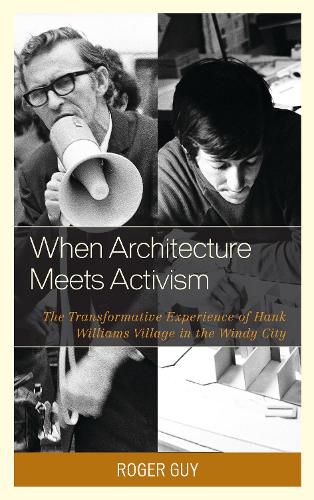Readings Newsletter
Become a Readings Member to make your shopping experience even easier.
Sign in or sign up for free!
You’re not far away from qualifying for FREE standard shipping within Australia
You’ve qualified for FREE standard shipping within Australia
The cart is loading…






This social history and community study documents the events surrounding the attempt by community members, activists, and VISTA architects to resist the planned construction of a community college in the neighborhood of Uptown. The planner and architect are seldom envisioned as advocates for the urban poor. However, during the 1960s, New Left planners and architects began working with marginalized groups in cities to design alternatives to urban renewal projects. This was part of a national advocacy planning movement that was taking shape in urban areas like Chicago. Inspired by critics of the Rational-comprehensive model of planning, advocacy planners opposed the imposition of projects on neighborhoods often with no collaboration from residents. One example of this resistance was Hank Williams Village-a multi-purpose housing and commercial redevelopment project modeled after a southern town. The Village was an attempt to prevent the displacement of thousands of southern whites by the planned construction of a community college in Chicago’s Uptown neighborhood. While the plan for the Village failed to win support of the local urban renewal board, the work performed by the young VISTA architects became instrumental in their subsequent career trajectories and thus served as formative personal and professional experience.
$9.00 standard shipping within Australia
FREE standard shipping within Australia for orders over $100.00
Express & International shipping calculated at checkout
This social history and community study documents the events surrounding the attempt by community members, activists, and VISTA architects to resist the planned construction of a community college in the neighborhood of Uptown. The planner and architect are seldom envisioned as advocates for the urban poor. However, during the 1960s, New Left planners and architects began working with marginalized groups in cities to design alternatives to urban renewal projects. This was part of a national advocacy planning movement that was taking shape in urban areas like Chicago. Inspired by critics of the Rational-comprehensive model of planning, advocacy planners opposed the imposition of projects on neighborhoods often with no collaboration from residents. One example of this resistance was Hank Williams Village-a multi-purpose housing and commercial redevelopment project modeled after a southern town. The Village was an attempt to prevent the displacement of thousands of southern whites by the planned construction of a community college in Chicago’s Uptown neighborhood. While the plan for the Village failed to win support of the local urban renewal board, the work performed by the young VISTA architects became instrumental in their subsequent career trajectories and thus served as formative personal and professional experience.